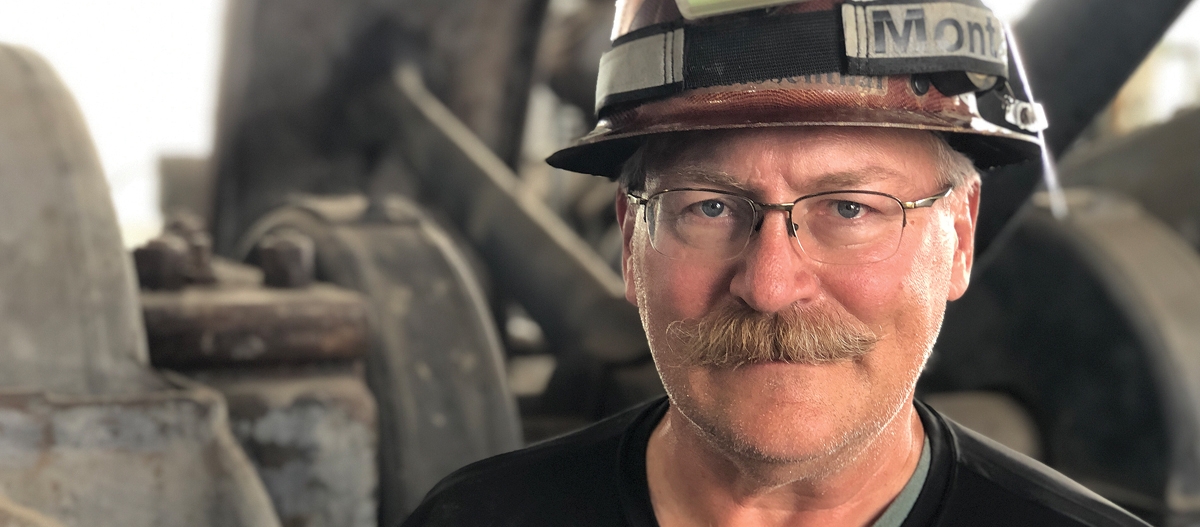By AARON PARRETT
Butte, Montana is famous the world over for a lot of things—the war of the copper kings, the pork chop sandwich, and the world’s most toxic lake, to name a few. But it also happens to be the home of one of the country’s most unusual museums: The World Museum of Mining, tucked into a hillside behind the campus of Montana Tech in uptown Butte.
Scott Rosenthal, the Anaconda Professor of Mining Engineering at Montana Tech, is one of a handful of tour guides who routinely take visitors 100 feet below ground to see the workings of the old Orphan Girl Mine.
“We’ve been leading tours of the mine down to the 65-foot level since 2011,” Rosenthal explained, “But expanded them to include the 100 foot level in 2017.
Visitors who sign on for the Orphan Girl tour have to first visit the “dry,” where the miners used to shower and swap out of their sweat-soaked clothes before heading down the hill toward home. Every visitor gets an I.D. tag, just as the miners did. Visitors then have to hang a tag on a hook, to be retrieved at the end of the tour, just as miners had to “check out” at the end of a shift to ensure no one was lost or missing underground.
Everyone then puts on a hardhat with a headlamp, after which Rosenthal leads the tour down a long, sloping walkway to the 65-foot level.
“The miners would have descended down to whatever level they worked by way of the hoists at the headframe, but the tour is a walking tour down a gentle descent,” Rosenthal said. “The mine operated at various levels, the deepest being 3,200 feet below the surface at the headframe. It would take about 10 minutes to get down there by the hoist.”
It’s an eerie feeling being underground in a mine, surrounded by damp rock bolstered by 12-inch square timbers, with only the feeble beam from a headlamp to light the way.
You can’t help but imagine the feelings the miners must have had trudging underground to work every day. It’s hard also not to think about earthquakes.
“Well, you’re probably safer in the mine during an earthquake,” Rosenthal explained. “The waves that cause the damage are the surface waves, undulating the ground. The rock underground doesn’t move.”
But safety is a serious concern for the museum, and industry experts inspect the Orphan Girl tour sections a couple of times a year.
“It’s extremely safe,” Rosenthal reassured me, “or else I wouldn’t do it.”
The Orphan Girl mine tours were made possible by a Superfund Advisory and Redevelopment Trust Authority (SARTA) grant that the Museum coordinated with Montana Tech.
Rosenthal himself attended tech, graduating in 1982, and returning to get a Master’s degree in Mining Engineering. He spent more than 30 years in industry, and returned home five years ago to become a professor and part-time tour guide.
“I really enjoy taking people down there who may not know a lot about how mining works, or how important mining is for many of the things we take for granted.”
Mining students at Tech got some invaluable first-hand experience creating the exhibit and tour, as they helped develop the 100-foot level, replacing many of the old timbers used for cribbing in the original mine.
Nowadays, the rock is supported by means of steel pins and heavy wire mesh.
Though it closed as a working mine in 1956 when metal prices plunged, the Orphan Girl lives on a unique historical resource.
“We’re the only tour of its kind in Montana and neighboring states,” Rosenthal said. “There are a few tourist mines in Colorado and Nevada.” He added the Orphan Girl tour is an invaluable resource for seeing up close how underground mining was actually done. “There are only a few operating underground mines in Montana,” Rosenthal said, “but none in Butte.”
The window for taking a tour is April through October. “We do the haunted underground around Halloween.”
All the proceeds from admissions to the tour go to the World Museum of Mining. MSN
For more information on the Orphan Girl Mine, visit miningmuseum.org or call 406-723-7211.








